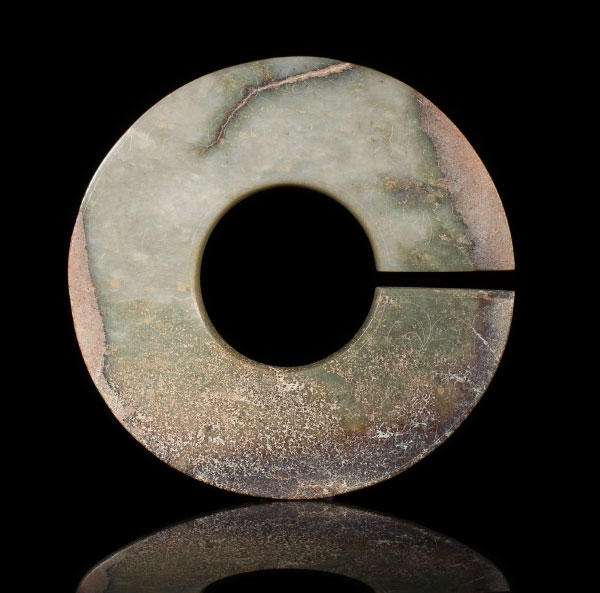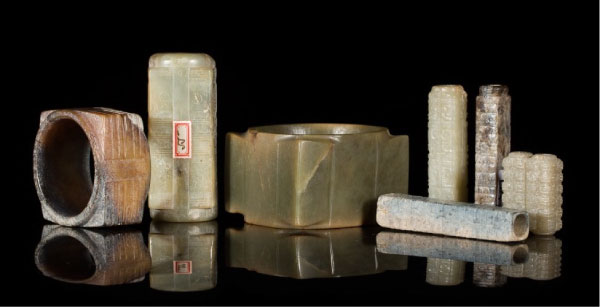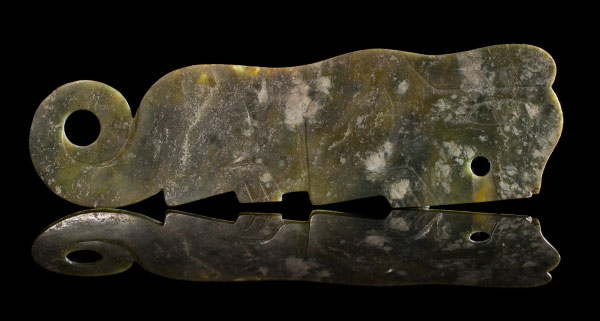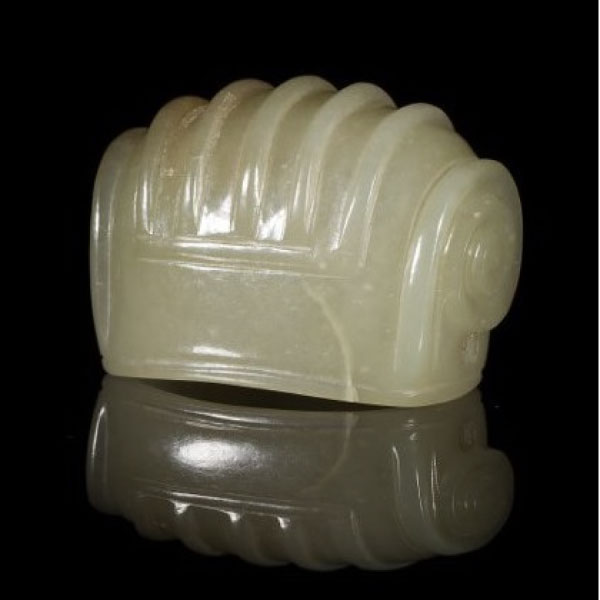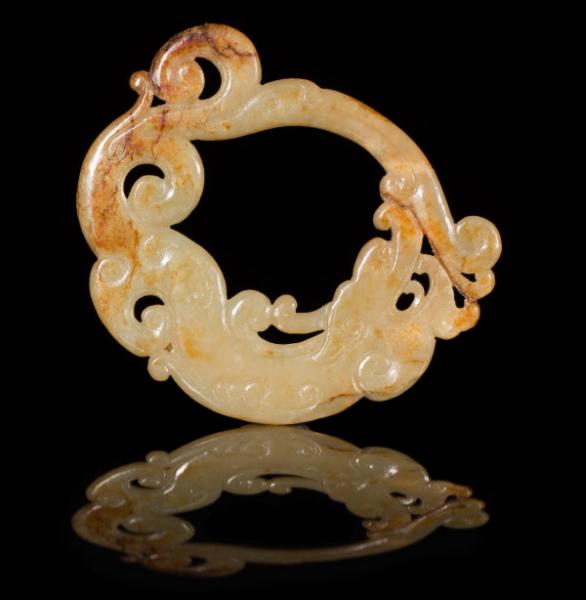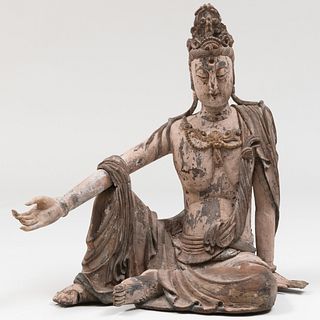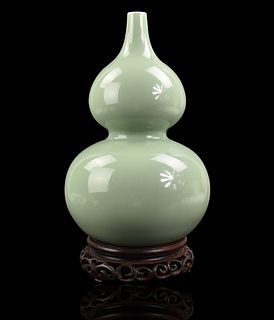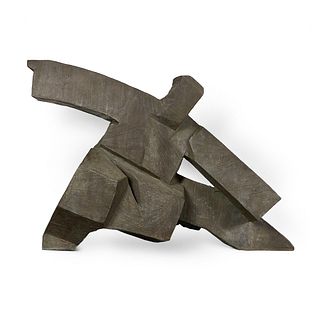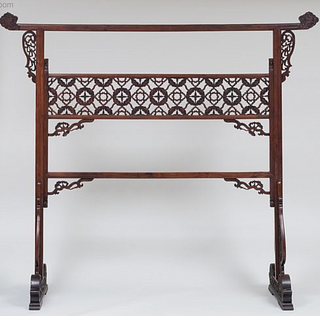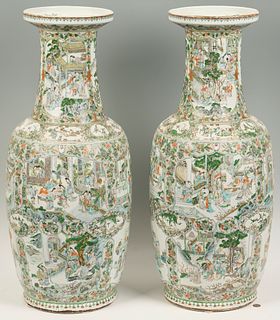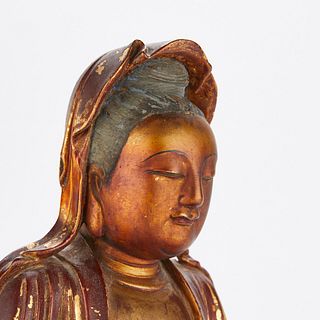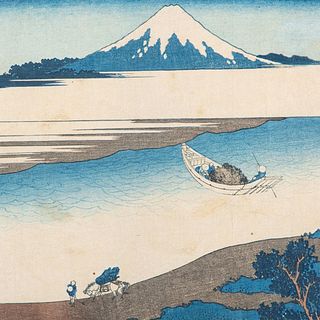Neolithic Jade
Jade has been an essential material of art and worship in China since its birth as a culture over 6000 years ago. The myriad of colours and translucencies formed the belief that the natural beauty of the stone held the essence of universe’s qi and thus a quintessential part of early culture. Historical context notes that the birth of jade culture in China corresponds with the beginnings of metallurgy and the invention of written language in the Ancient Near East (Tigris Euphrates).
In China, jade was being carved in the areas along the Yellow and Yangzi Rivers, considered to be the birthplace of Chinese civilization including the Neolithic period Yangshao, Hongshan and Liangzhu cultures. Carved jade was an essential part of ritual, as represented in funerary ceremonies. Small jade objects or pendants were kept for personal prayer and larger objects became symbols of social status. The Liangzhu jade ritual congs were carved with mask like faces on each corner, later to become a key symbol for the Taotie or monster mask in later Bronze Age design. By the Shang dynasty (1675 – 1046 BC), the cong as a ritual object became symbolic of earth and bi discs became the symbol of heaven. Jade became a key component in Shang funerals and burials. It was believed that when the body decomposed, it would transmit the essence of the soul into the jades in the grave. From the Neolithic Pottery period through to the Han dynasty, jades were an integral part of the burial.
In early tombs Jade carvings were placed on symbolic areas of the body; the Neolithic three-pronged pendant was placed on the forehead of the deceased with awl pendants around the temples, split bis on the ears and cicadas on the tongue. Bi discs and ritual congs were placed on the arms and body, and in the Han dynasty pigs were places in the hands of the body to signify wealth and prosperity in the afterlife.
The 19th and early 20th century brought a renewed interest in Chinese culture and history. As the banks of the rivers were developed as China modernized, rare jades were being unearthed, disturbed from their original burial sites, they became echoes of a lost culture. The Langleb collection represents a rarely offered selection of jade from these historically significant early cultures as well as key pieces from the Ming and Qing dynasties.
- Preview the December Doyle+Design Auction: A Celebration of Modern & Contemporary Mastery
- Billings Winter Design 2025: A Celebration of Modern Mastery Across Eras
- The Ultimate Holiday Gift Guide: Luxe Finds From Bidsquare’s Finest Auctions
- Fine & Antique Jewelry Sale: A Curated Journey Through Craftsmanship & Design
- Upcoming Auction Spotlight: Doyle’s Fine Art: 19th Century & Early Modernism
- Entertain with Style This Holiday Season: Highlights from Doyle’s December 8 Auction
- Six Standout Lots from Newel’s Fine Jewelry, Timepieces & Luxury Handbags Sale
- Artist Spotlight: Roy Lichtenstein, Pop Art’s Master of Bold Lines & Bigger Ideas
- Discover the Warmth of Pennsylvania Impressionism: Nye & Co.’s Dec. 3 Auction Features the Collection of Nancy & Robert Stein
- Inspired by Cape Cod: The Artists Who Paint Its Light, History, and Character



 EUR
EUR CAD
CAD AUD
AUD GBP
GBP MXN
MXN HKD
HKD CNY
CNY MYR
MYR SEK
SEK SGD
SGD CHF
CHF THB
THB